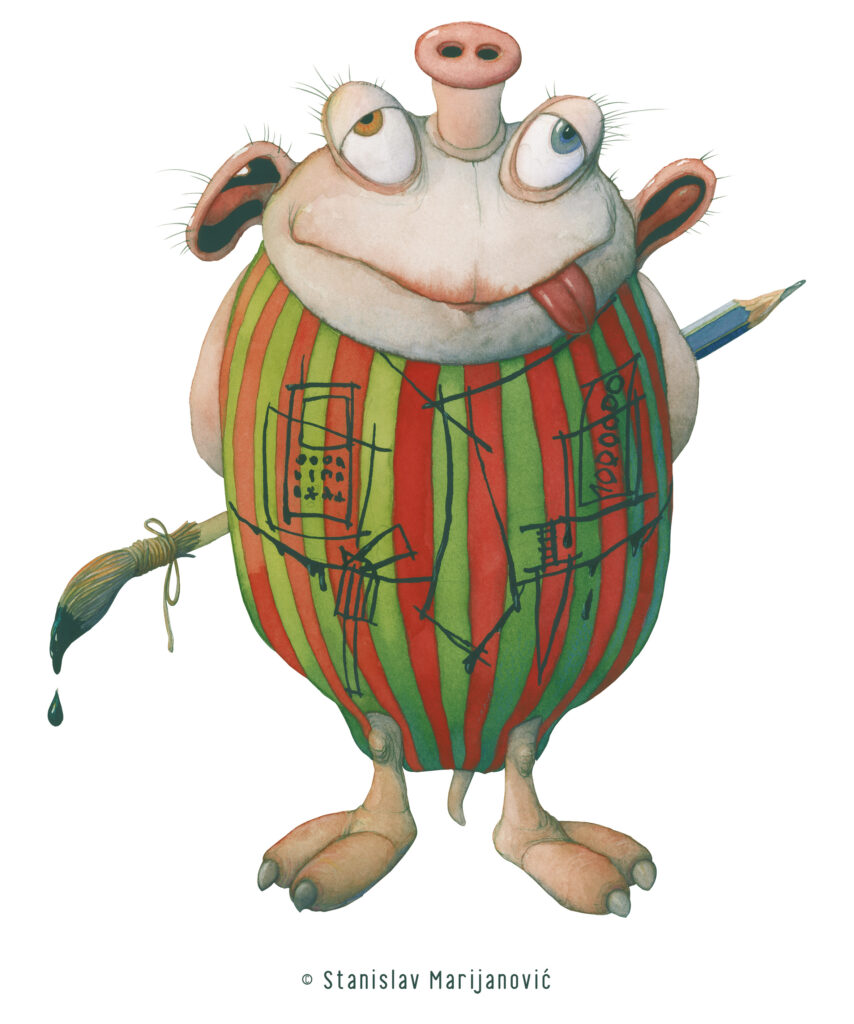The 9th International Conference of The European Network of Picturebook Research
28–29 September 2023
Osijek, Croatia
Organised by the European Network of Picturebook Research and the Croatian Association of Researchers in Children’s Literature (CARCL)
Call for Attendance
We are happy to invite you to attend the 9th International Conference of the European Network of Picturebook Research, either in person or online.
Below you will find the information on the conference fee, the description of the conference theme, and other relevant pieces of information.
For those attending virtually, it will be possible to choose between two parallel sessions and ask questions in the chat. The presenters will reply to your questions during the discussion time of each session.
All those who register for the virtual attendance will receive the information on how to join the virtual room in the weeks prior to the conference. Registration is valid upon the payment of the attendance fee. Please use the registration link on the conference website: https://hidk.hr/enprconf2023/.
Conference Fee – Attendance Only
In-person:
Regular fee (to be paid by 10 September 2023): €130
Online attendance:
Regular fee (to be paid by 10 September 2023): €30
Conference description
The general theme of the conference addresses the complex relationship between fiction and reality as a topic that is highly relevant for the picturebook format. Drawing on Barbara Bader’s famous definition (1976: 1), we may state that the picturebook as an art form hinges on the interdependence of fiction and reality. Our intention is to initiate a discussion of various aspects of this relationship in picturebooks and to explore the status of the picturebook as a kind of artefact in regard to these two realms.
In picturebooks, this relationship can be observed from different angles, such as semiotic structure, the fiction-nonfiction divide, materiality, metafiction, the reading process, and others. The semiotic structure of the picturebook depends on the ways meanings are conveyed through pictures and words. We may explore which elements of these two media are real (fonts, design, three-dimensionality, covers, etc.), and which of them are purely fictional (characters, settings, actions). Regarding the fiction- nonfiction divide itself, fiction picturebooks often populate their worlds with people, objects or artefacts from the real world. On the other hand, nonfiction picturebooks may include fictional elements, such as fairies alongside chairs in alphabet books. Possible combinations of these elements create specific meanings. Besides, research has shown that the picturebook uses its materiality to convey meanings, which makes it a real object on the threshold of reality and fiction. It would be useful to explore how they coexist, and how the materiality of picturebooks as real-life objects challenges or supports their fictional content. This is only one way in which picturebooks expose their metafictionality, and their customary self-consciousness and frequent self-referentiality make it even more obvious. Finally, the “drama of the turning of the page” (Bader 1976: 1) puts the reader and the picturebook into a specific relationship to each other. The dialogue between the two picturebook discourses, words and pictures, can only happen in the process of reading. It is thus important to consider how reality and fiction meet in this process.
The authors of 42 selected state-of-the-art presentations accepted for the conference will certainly encourage us to explore how picturebooks raise some of the deepest existential questions through various encounters of fiction and reality, and how they do so in a way that is attainable to every reader, regardless of age. We hope that after the conference we will better understand the ways in which picturebooks provide both an early aesthetic experience of the world and an important space for unique and differing perspectives throughout a lifetime, especially through their twofold, parallel existence in the domains of the real and the fictional.
About the conference
The European Network of Picturebook Research was established during the first picturebook conference in Barcelona in September 2007. The network was proposed by Bettina Kümmerling-Meibauer (University of Tübingen, Germany), and the core group of picturebook researchers, which includes or has included Evelyn Arizpe, Nina Christensen, Teresa Colomer, Elina Druker, Maria Nikolajeva and Cecilia Silva-Díaz.
Since then, biannual picturebook conferences have been held in different countries: 2009 in Glasgow, Scotland; 2011 in Tübingen, Germany; 2013 in Stockholm, Sweden; 2015 in Gdansk, Poland; 2017 in Padova, Italy; 2019 in Bergen, Norway, and 2021 in Tel Aviv, Israel.
The aims of these conferences are to foster international picturebook research, to promote young researchers who are focusing on the investigation of picturebooks publish selected papers presented at the conferences through international publishers or in peer- reviewed journals.
You can also find all relevant information on the conference website and follow it for regular updates.
Should you have any further inquiries or require additional information, please contact us at: enprconf2023@gmail.com.

